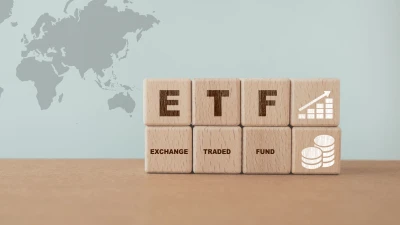Is there anywhere to hide while the Fed hikes rates?



Investors could be left with limited options to defend their portfolios if the US Federal Reserve ends up lifting interest rates more than the market is expecting this year, fund managers have warned.
In last week’s policy-setting meeting, the US central bank decided to keep rates at close to zero but indicated that it would lift them at its next meeting in March in an attempt to curb soaring inflation.
Fed chair Jerome Powell told a press conference: “I would say the committee is of a mind to raise the federal funds rate at the March meeting assuming that conditions are appropriate for doing so.
“The economy no longer needs sustained monetary policy support.”
Powell also attempted to reassure that the central bank can lift rates without damaging the economy, although he added that policymakers “have [their] eyes on the risks”.
James Athey, investment director at abrdn (formerly Aberdeen Standard Investments), argued that the very fact Powell downplayed concerns over the tightening of financial conditions at this point suggests the market should start to price in “considerably more” monetary tightening than it currently is.
Indeed, Aegon Asset Management said Powell’s comments mean there is a “reasonable probability” of seven rate hikes from the Fed this year – one at each meeting – compared with the market’s expectation of just four.
“This could cause investors to fall off chairs,” said Aegon investment manager Nick Chatters.
Markets have been increasingly volatile in 2022 so far as investors eye up a hiking cycle from the Fed. Global equites had fallen around 7% this year (in US dollar terms), with the biggest hit being taken by tech stocks – which have ridden high on the past decade’s ultra-loose monetary policy.
Performance of global equities, growth and value in 2022
Source: FE Analytics. Total return in US dollars
Tighter than expected conditions would act as a material headwind for equities in general, abrdn’s Athey noted, but especially those growth stocks that were trading on “nosebleed multiples” following years of being bid up by low interest rates and quantitative easing.
Growth stocks were more attractive when rates are low and investors were willing to pay more for future earnings, but this would not always be the case. Growth stocks had already started to lag behind value as investors weighed up the impact of higher interest rates.
But this did not mean that undervalued stocks – which had been ignored by investors for much of the past decade but started to make a comeback – would be immune to any future sell-offs.
“The market consensus for this year was that tighter Fed policy would weigh on the ‘bond-proxy’ stocks mainly to be found in the growth factor and/or the tech sector. Instead, investors should position for outperformance of value and cyclicals,” he said.
“My concern would be that such a trade is highly consensus and is unlikely to protect investors from the sort of broad based and rather disorderly equity declines we have seen on occasion this year – and indeed are likely to see more of.”
Athey suggested that 2022 could end up being “a high-octane version of 2018”, when monetary policy started to tighten, China and the US embarked on a trade war and investors stressed about the health of the global economy. Investors were hit with stockmarket falls that year.
“There aren’t likely to be many places to hide,” he warned.
“Long the US dollar, short rates - particularly in the five-year sector, yield curve flatteners are all strategies that should work as the Fed pushes on. If you are an equity investor then cash is king. Maybe hunkering down in commodity names could help at the margin, but if the Russia situation were to de-escalate, I think the oil price would feel the pressure of a tighter Fed and stronger dollar.”
Recommended for you
Nuveen has made its private real estate strategy available to Australian wholesale investors, democratising access to a typically institutional asset class.
VanEck is expanding its fixed income range with a new ETF this week to complement its existing subordinated debt strategy which has received $1 billion in inflows this year.
Specialist global equities manager Nanuk has celebrated 10 years of its flagship New World Fund and is actively considering its next possible vehicle.
Australian equities manager Datt Capital has built a retail-friendly version of its small-cap strategy for advisers, previously only available for wholesale investors.











